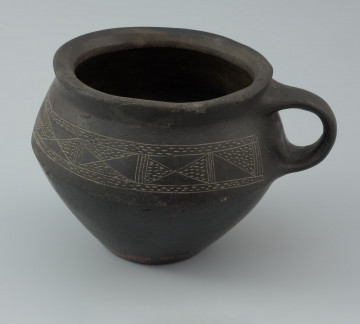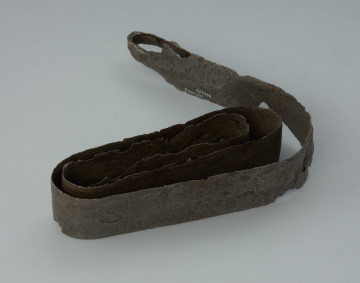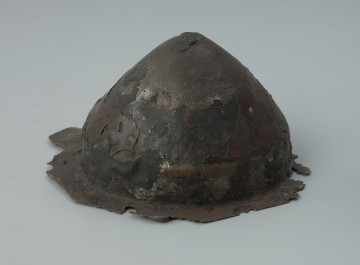
Decorated mug
National Museum in Szczecin
Part of the collection: Antiquity
The tweezers were made of bronze sheet. Their arms have keyhole-shaped holes. In general, they can be dated to the earlier pre-Roman period (2nd - 1st centuries BC) and can be associated with the people of the Oksywie culture. These tribes practiced only the cremation of the dead. Graves were furnished with weapons, ornaments, and sometimes tools and toiletries, such as the presented tweezers. Unfortunately, the circumstances of their finding and transferring to the museum collection are not known today. The tweezers are covered with the patina in green colour, which is beneficial for objects made of copper and its alloys - as it is a durable coating with protective properties. In the 19th century in Buczek, a discovery was made of one large cemetery or two smaller ones which were used for a long time, from 2nd century BC until 3rd century AD. Moreover, in a lake near this village, a unique sacrificial site from the Roman period (1st - 3rd centuries) was discovered. Considerable quantities of glass and amber beads as well as other ornaments and items of clothing were excavated from the bottom of the lake. It is assumed that these items were ritually thrown into the water during religious ceremonies. Similar sacrificial sites in lakes and marshes are known from the Scandinavian area. Amateur investigations of the mentioned archaeological sites took place, among others, in 1882 and 1934.
Bartłomiej Rogalski
Author / creator
Dimensions
cały obiekt: width: 7.5 cm
Object type
tweezers
Technique
forging; cast
Material
bronze
Creation / finding place
Owner
Muzeum Narodowe w Szczecinie
Identification number
Location / status

National Museum in Szczecin

National Museum in Szczecin

National Museum in Szczecin
DISCOVER this TOPIC
National Museum in Szczecin
DISCOVER this PATH
Educational path